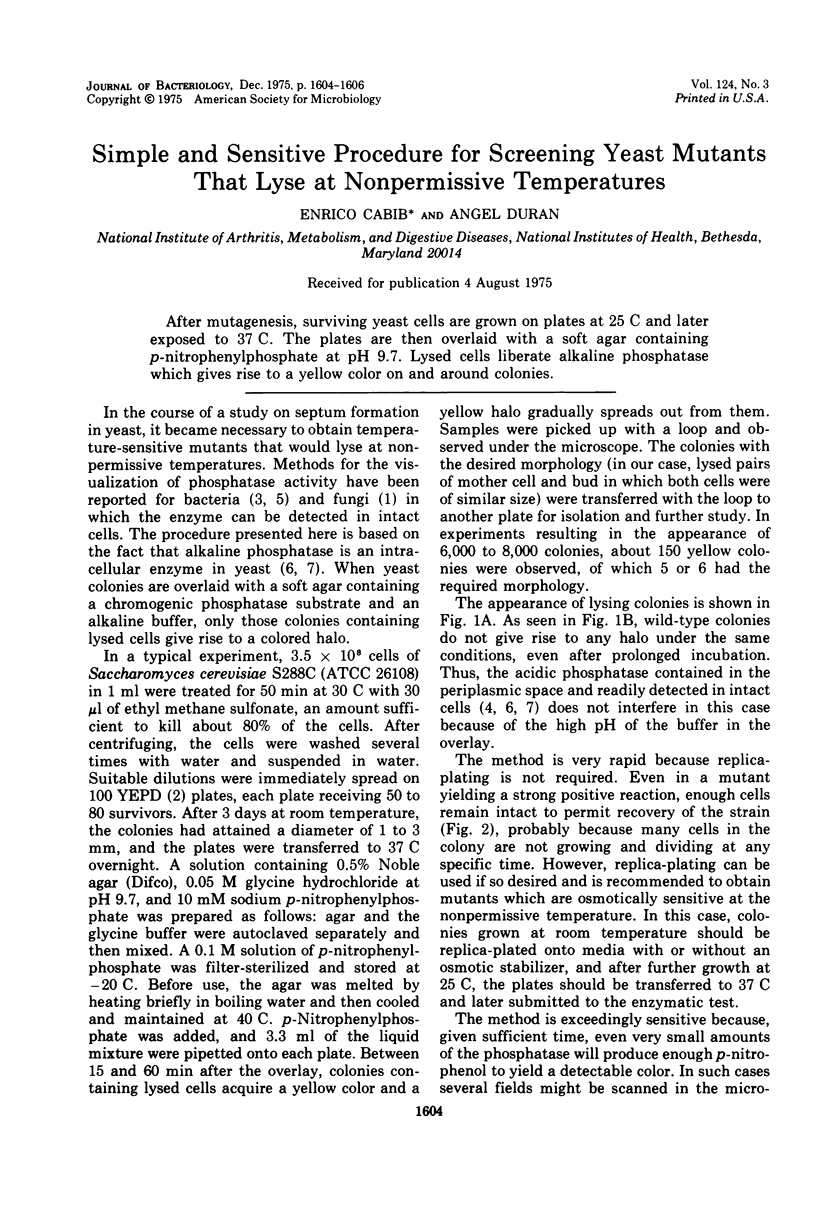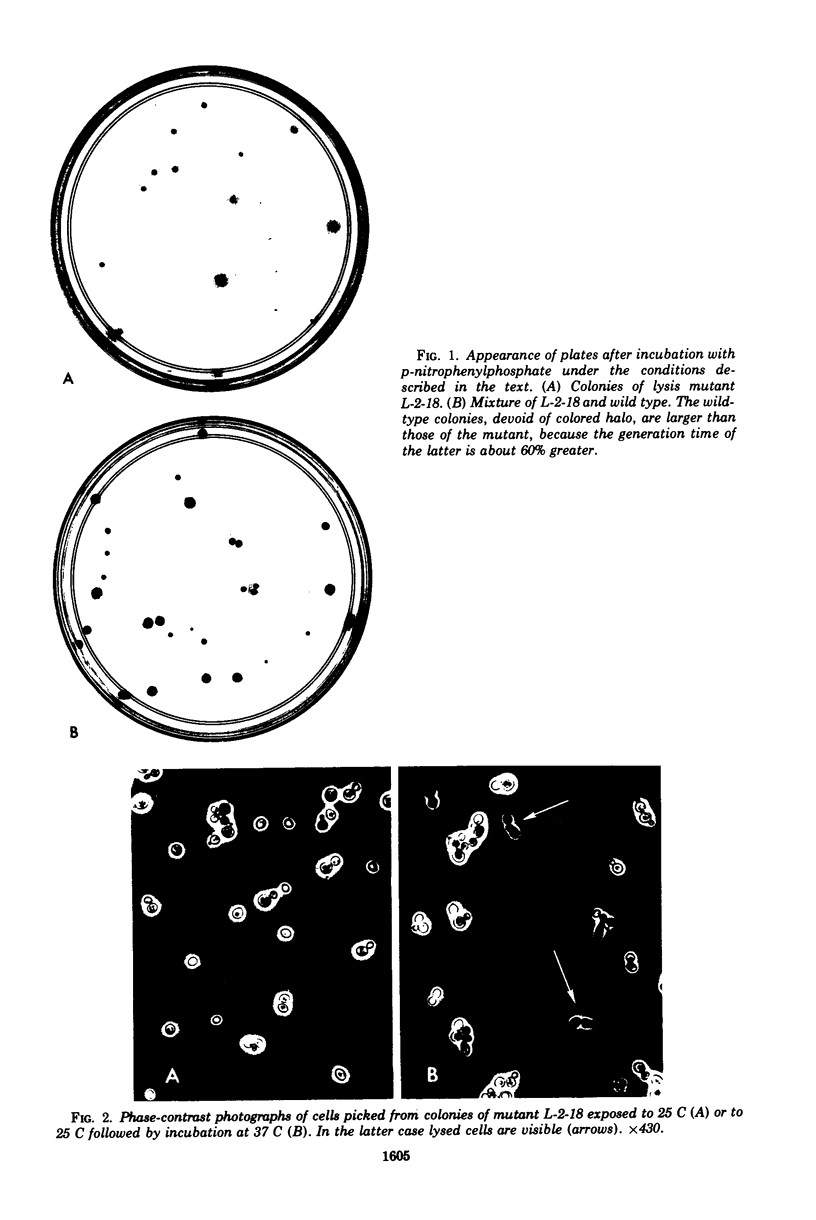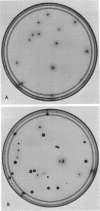Abstract
After mutagenesis, surviving yeast cells are grown on plates at 25 C and later exposed to 37 C. The plates are then overlaid with a soft agar containing p-nitrophenylphosphate at pH 9.7. Lysed cells liberate alkaline phosphatase which gives rise to a yellow color on and around colonies.
Full text
PDF


Images in this article
Selected References
These references are in PubMed. This may not be the complete list of references from this article.
- DORN G. GENETIC ANALYSIS OF THE PHOSPHATASES IN ASPERGILLUS NIDULANS. Genet Res. 1965 Feb;6:13–26. doi: 10.1017/s0016672300003943. [DOI] [PubMed] [Google Scholar]
- MCLELLAN W. L., Jr, LAMPEN J. O. The acid phosphatase of yeast. Localization and secretion by protoplasts. Biochim Biophys Acta. 1963 Feb 12;67:324–326. doi: 10.1016/0006-3002(63)91832-8. [DOI] [PubMed] [Google Scholar]
- Messer W., Vielmetter W. High resolution colony staining for the detection of bacterial growth requirement mutants using naphthol azo-dye techniques. Biochem Biophys Res Commun. 1965 Oct 26;21(2):182–186. doi: 10.1016/0006-291x(65)90106-3. [DOI] [PubMed] [Google Scholar]
- SUOMALAINEN H., LINKO M., OURA E. Changes in the phosphatase activity of Baker's yeast during the growth phase and location of the phosphatases in the yeast cell. Biochim Biophys Acta. 1960 Jan 29;37:482–490. doi: 10.1016/0006-3002(60)90505-9. [DOI] [PubMed] [Google Scholar]




